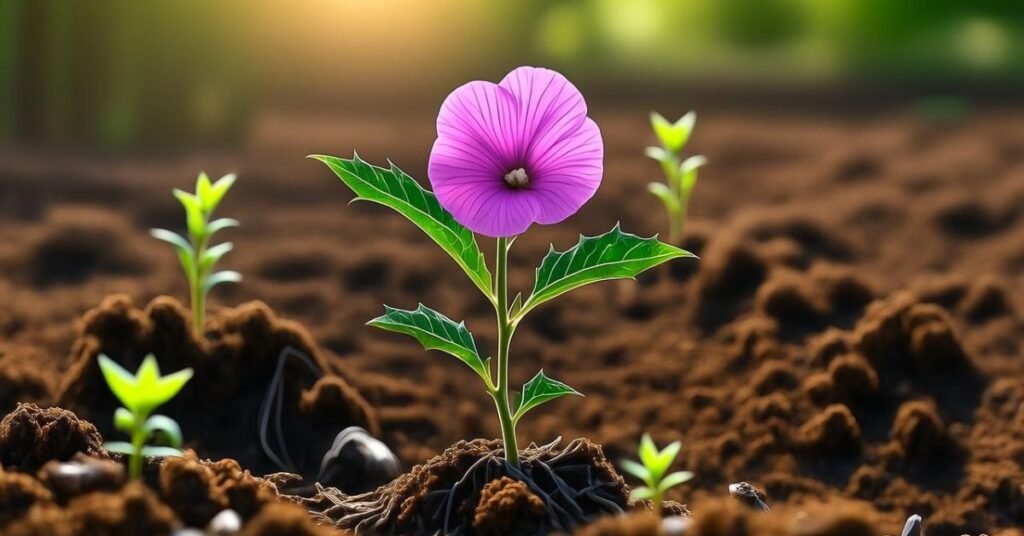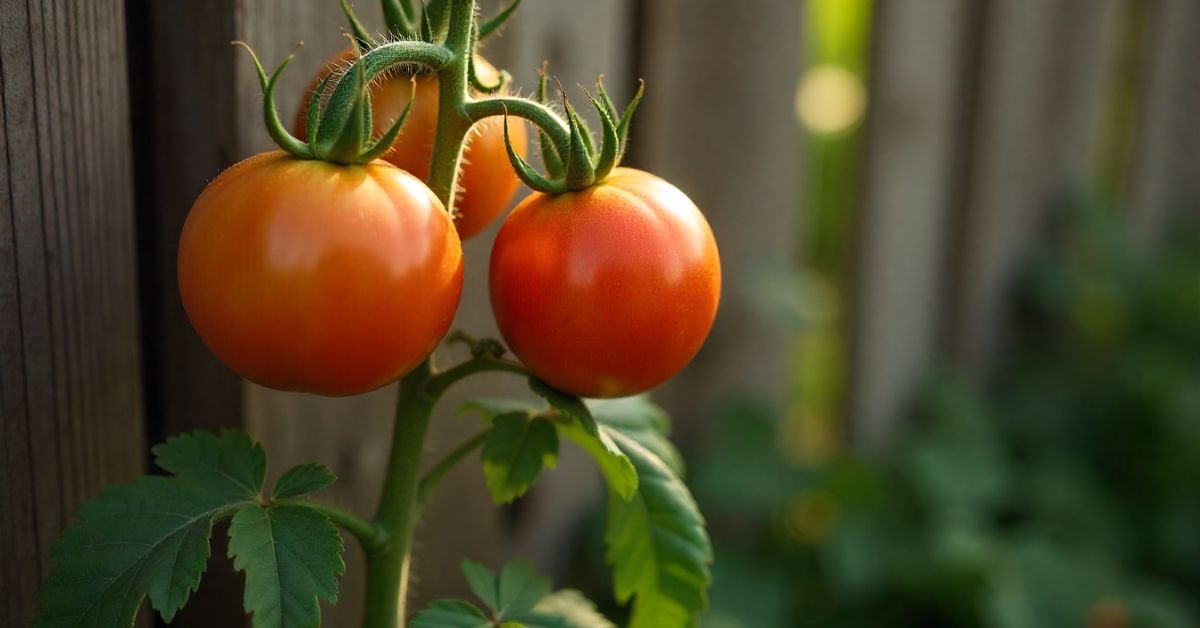Introduction
Blossom drop happens when flowers on a tomato plant dry up and fall before turning into fruit. It is a common issue many gardeners face. The plant produces flowers, but they fail to develop into tomatoes. This can be frustrating, especially when the plant looks healthy otherwise.
Many factors cause blossoms to fall off. Changes in temperature, stress, or lack of pollination are major reasons. Gardeners often worry when they see flowers dropping because it directly affects harvest. Understanding why this happens can help you save your plants.
Blossom drop may occur due to heat, poor watering habits, or low nutrients. Sometimes, pollination does not happen properly. Learning these reasons can help you prevent blossom loss and enjoy a better tomato yield.
What Is Tomato Blossom Drop?
Tomato blossom drop happens when flowers dry out and fall before forming fruit. The plant looks healthy but fails to set tomatoes. Both indoor and outdoor plants are affected by this problem. It reduces the overall harvest and disappoints gardeners.
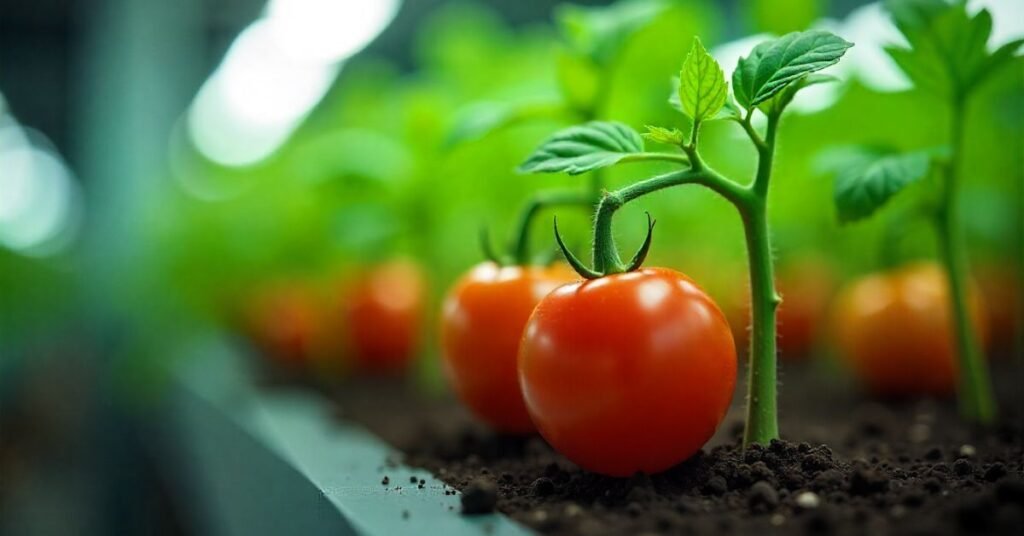
The main cause is stress on the plant. Heat, poor watering, and lack of pollination trigger the drop. Nutrient imbalance also adds to the issue. You can take action if you spot the warning signs early. This helps the plant hold flowers and produce more fruit.
Why Are My Tomato Flowers Falling Off?
Tomato flowers often fall due to stress or imbalances in their growing conditions.Flowers cannot set fruit due to this problem, known as blossom drop. Understanding the causes helps you protect your plants and improve yield.
Environmental Stressors (Abiotic Factors)
Temperature Extremes
Tomatoes grow best in daytime temperatures between 70–85°F and nighttime temperatures between 55–70°F. When the temperature rises above 85°F or drops below 55°F, flowers start drying up and falling. High heat makes pollen sterile, stopping fertilization. On the other hand, low nighttime temperatures reduce pollination and prevent fruit set.
Humidity Levels
Humidity strongly influences pollination. The ideal range is 40–70% relative humidity. Low humidity dries out pollen, while high humidity causes it to clump. In both cases, successful pollination becomes difficult, and blossoms drop.
Water Stress
Improper watering also leads to blossom drop. Overwatering suffocates roots by reducing oxygen in the soil. Underwatering stresses the plant and causes wilting, which halts flower and fruit production. Consistent watering keeps the plant balanced and healthy.
Inadequate Light
Tomatoes require 6–8 hours of direct sunlight every day. Without enough light, the plant cannot produce the energy needed for flowers and fruit. Poor light conditions weaken blossoms and cause them to fall off.
Wind Stress
Strong winds can break or dry out delicate flowers. Excessive wind exposure damages blossoms and leads to premature flower drop.
Nutrient Imbalances
Excess Nitrogen
Too much nitrogen fertilizer produces lush green leaves but limits flower and fruit formation. The plant invests energy in growth instead of reproduction.
Nutrient Deficiency
A lack of potassium and phosphorus reduces flower vitality and prevents fruit development. Balanced nutrients are essential for healthy blossoms and steady yields.
Biological Stressors (Biotic Factors)
Pests and Diseases
Insects such as aphids, thrips, and whiteflies often attack tomato plants. These pests feed on flowers and weaken them, which leads to blossom drop. Diseases like blossom end rot and early blight also reduce the plant’s strength. A weak plant cannot support blossoms, so flowers dry up and fall.
Heavy Fruit Set
Sometimes, a tomato plant produces too many fruits at once. When this happens, the plant cannot supply enough nutrients and energy to both the developing fruits and the new blossoms. As a result, it naturally drops extra flowers to balance its growth.
Genetics and Tomato Variety Matter
Tomato varieties differ in how they grow, flower, and set fruit. Some are naturally short lived bloomers, while others keep producing all season long. Likewise, certain types handle stress better than others. Understanding these differences helps you choose the right tomato for your garden and avoid problems like blossom drop.
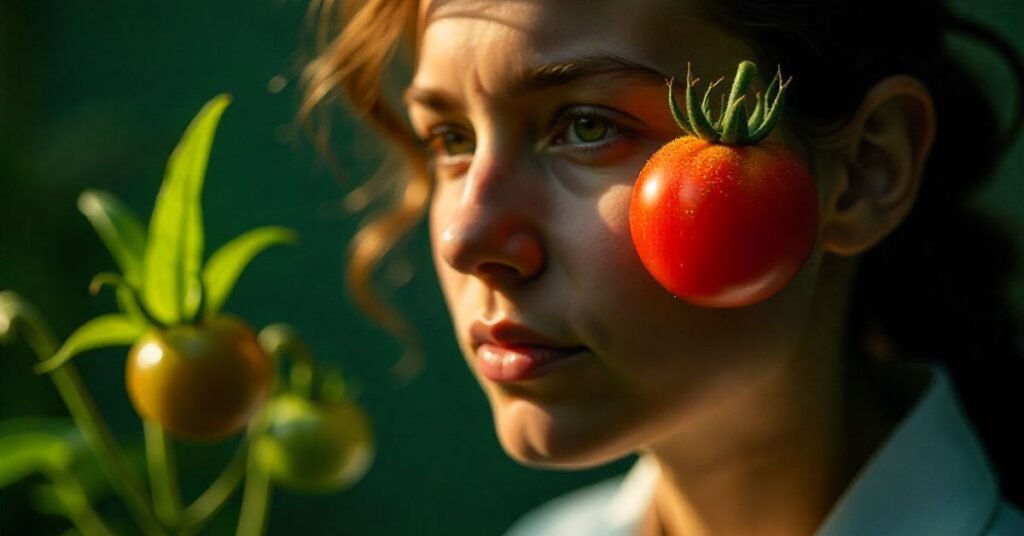
Determinate vs. Indeterminate Tomatoes
- Determinate tomatoes
- Grow to a certain height and then stop.
- Produce flowers and fruit in a short, concentrated period.
- Often used for canning and preserving since the harvest comes all at once.
- After fruiting, the plant puts little energy into new blossoms.
- Grow to a certain height and then stop.
- Indeterminate tomatoes
- Produce fruit throughout the season as it grows, flowers, and produces seeds.
- Provide multiple harvests, offering more chances for successful pollination.
- Usually require staking or caging because of their continuous growth.
- Providing a steady supply of fresh tomatoes to gardeners.bl
- Produce fruit throughout the season as it grows, flowers, and produces seeds.
Heirloom vs. Hybrid Tomatoes
- Heirloom tomatoes
- Open pollinated and passed down through generations.
- Known for their exceptional taste, color variety, and unique shapes.
- Can be more sensitive to stress, pests, and diseases.
- May experience higher blossom drop in extreme weather conditions.
- Open pollinated and passed down through generations.
- Hybrid tomatoes
- Crossbred to combine the strengths of different tomato varieties.
- Often bred for disease resistance, higher yields, and stress tolerance.
- Provide a more reliable fruit set, even in less than ideal growing conditions.
- Usually lack some of the unique flavors and colors of heirlooms but excel in performance.
- Crossbred to combine the strengths of different tomato varieties.
Best Practices to Prevent Tomato Blossom Drop
The failure of tomato flowers to produce fruit is known as bloom drop. The main reasons are usually environmental such as heat stress, irregular watering, poor pollination, or unbalanced nutrition. The good news is that with the right care, you can reduce blossom drop and increase your tomato harvest.
1. Mulch to Keep Soil Cool and Moist
Mulching is one of the easiest ways to reduce plant stress, a leading cause of blossom drop. Spread a 2 to 3 inch layer of organic mulch (like straw, shredded leaves, or compost) around your tomato plants. Mulch helps the soil stay evenly moist, regulates temperature, and suppresses weeds.
Tip: Over time, mulch enriches soil and improves structure as it breaks down
2. Provide Shade During Heatwaves
Tomato flowers are very sensitive to temperature. When daytime highs stay above 85–90°F (29–32°C) and nights remain above 70°F (21°C), pollen often becomes sterile, leading to blossom drop.
In the hottest parts of the day, shade cloth can keep plants cooler and reduce stress. A simple frame or trellis can hold the cloth in place.
3. Fertilize Smartly for Fruit, Not Just Leaves
Too much nitrogen makes tomato plants grow more leaves but fewer flowers and fruits. Instead, choose a balanced or low nitrogen fertilizer something with an N,P,K ratio like 5,10,10 or 10,10,10.
Always apply fertilizer as directed and avoid frequent feeding. Over fertilizing can slow flowering, cause salt buildup, or affect pollination.
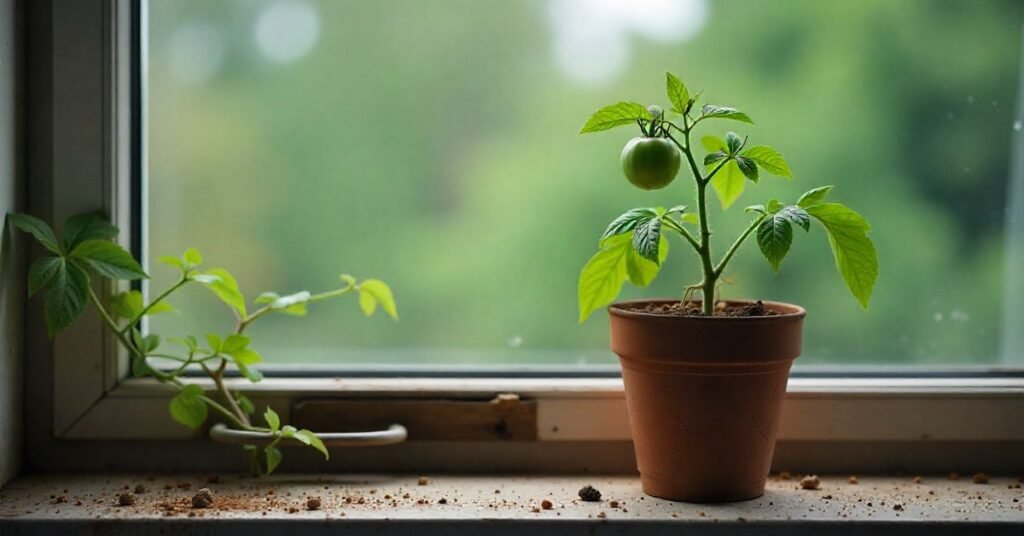
Tip: Compost is a natural, slow release option that keeps nutrients balanced.
4. Water on a Consistent Schedule
Irregular watering stresses tomatoes and can cause both blossom drop and blossom end rot. Water your soil and climate each week with 1 to 2 inches. Use drip irrigation or soaker hoses to water deeply at the roots, keeping leaves dry to prevent disease.
Avoid letting the soil swing between too dry and too soggy, as this disrupts nutrient absorption.
5. Rotate Crops to Prevent Soil Problems
Tomatoes belong to the nightshade family, which includes peppers, potatoes, and eggplants. Planting these crops in the same spot year after year allows pests and diseases to build up in the soil.
To prevent this, rotate your crops every 3 to 4 years and avoid planting nightshades in the same place repeatedly.
6. Boost Pollination Naturally
Even though tomatoes are self pollinating, they still need help from wind or insects to move pollen within flowers. Strong pollination increases fruit set.
Ways to encourage pollination:
- Plant bee friendly flowers like marigolds, borage, or calendula nearby.
- Gently shake tomato plants a few times a week.
- Use an electric toothbrush near flowers to mimic bee vibrations (“buzz pollination”).
Note: Avoid using broad pesticides during flowering, as they harm bees and other helpful insects.
Conclusion
Tomato blossom drops are common, but they can be managed with the right care. Focus on keeping plants stress free through proper mulching, shading, balanced feeding, and regular watering. Rotate crops to maintain healthy soil and encourage pollination for a better fruit set. By following these simple steps, you give your tomato plants the best chance to thrive and produce a rich harvest.
FAQs
1. Why do tomato flowers fall off without fruit?
Blossom drop usually happens due to heat stress, irregular watering, poor pollination, or nutrient imbalance.
2. What temperature causes tomato blossom drop?
Flowers drop when daytime temperatures rise above 85–90°F (29–32°C) and nighttime temperatures stay above 70°F (21°C).
3. How often should I water tomatoes to prevent blossom drop?
Water deeply and consistently, about 1–2 inches per week, depending on weather and soil conditions.
4. Does fertilizer affect blossom drop?
Yes, Too much nitrogen promotes leafy growth instead of flowers and reduces fruit set.
5. Can I prevent blossom drop naturally?
Yes. Use mulch, provide shade in hot weather, rotate crops, and encourage pollinators for better results.

